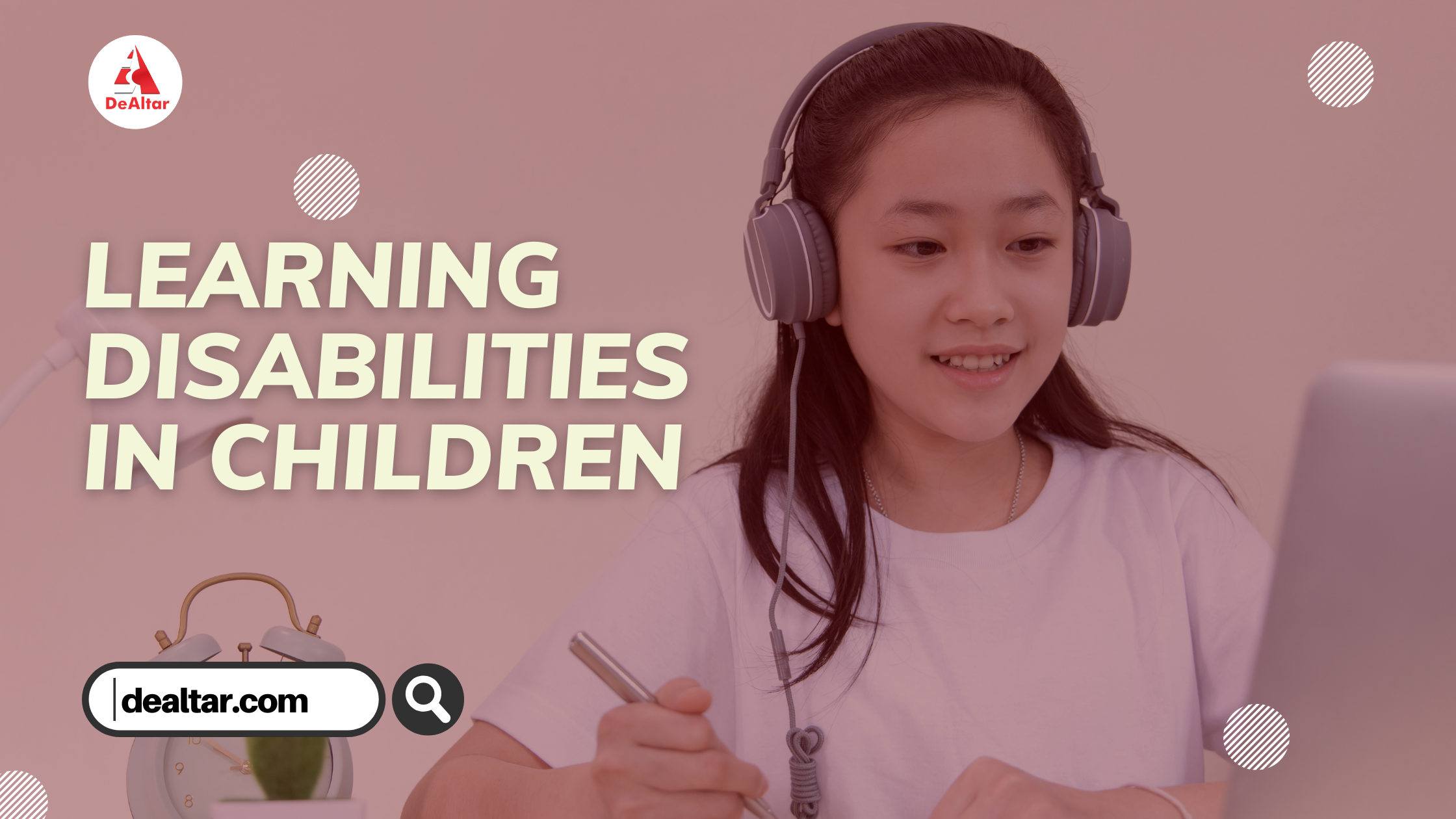Learning Disabilities in Children – Types, Symptoms And Care
Learning disability is defined by the Merriam-Webster dictionary as various conditions that interfere with the individual ability to learn and so result in impaired functioning in language, reasoning or academic skills (such as reading, writing and mathematics) and are thought to be caused by difficulties in processing and integrating information.
They can also interfere with higher-level skills such as organization, time planning, abstract reasoning, long or short-term memory and attention. It is important to realize that learning disabilities can affect an individual’s life beyond academics and can impact relationships with family, friends and in the workplace.
Learning disabilities should not be confused with learning difficulties which are primarily the result of visual, hearing, or motor handicaps; intellectual disability, emotional disturbance, or environmental, cultural or economic disadvantages; neither are they indications of a child being weak or lazy.
TYPES OF LEARNING DISABILITIES IN CHILDREN
Learning disabilities in children may include the following but are not limited to:
- Dyscalculia: this is a math learning disability that impairs an individual’s ability to learn number-related concepts, perform accurate math calculations, reasoning and problem solving, and perform other basic math skills. Dyscalculia is sometimes called “number dyslexia” or “math dyslexia.
- Dysgraphia: This a specific learning disability that affects a person’s handwriting ability and fine motor skills. A child who has trouble writing or has very poor handwriting and does not outgrow it may have dysgraphia. This learning disability may cause a child to be tense and twist awkwardly when holding a pen or pencil. It is associated with impaired handwriting, orthographic coding and finger sequencing (the movement of muscles required to write).
- Dyslexia: This is also known as a reading disorder; it is a disorder characterized by reading below the expected level for one’s age. This disorder may include difficulties in spelling words, reading quickly, writing words, sounding out words in the head, pronouncing words when reading aloud and understanding what one reads.
- Non-Verbal Learning Disabilities: This is a disability which has trouble interpreting non-verbal cues like facial expressions or body language and may have poor coordination but Difficulties are present in visual-spatial skills, visual-motor skills, and other skills necessary in social or academic functioning.
- Oral / Written Language Disorder and Specific Reading Comprehension Deficit: This is a learning disability that affects an individual’s understanding of what they read or of spoken language. The ability to express oneself with oral language may also be impacted.
SYMPTOMS OF LEARNING DISABILITIES IN CHILDREN
Common signs and symptoms include the following but are not limited to the below mentioned:
- Problems reading and/or writing
- Problems with math
- Poor memory
- Having hard time understanding what others are saying
- Difficulty organizing written and spoken language
- Delay in being able to speak
- Difficulty expressing thoughts or feelings
- A strong dislike of writing and/or drawing
- Problems with grammar
- Trouble writing down ideas
- Losing energy or interest as soon as they start writing
- Trouble writing down thoughts in a logical sequence
- Difficulty learning new words (vocabulary), either while reading or hearing
- Trouble learning foreign languages
- Difficulty learning songs and rhymes
- Slow rate of reading, both silently and out loud
- Giving up on longer reading tasks
- Trouble following directions
- Clumsiness
CARE FOR LEARNING DISABILITIES IN CHILDREN
If a child has a learning disability;
- Get extra help: A reading specialist, math tutor or other trained professional can teach your child techniques to improve his or her academic, organizational and study skills.
- Accommodative classroom: Classroom accommodations could include more time to complete assignments or tests, seating near the teacher to promote attention, use of computer applications that support writing, including fewer math problems in assignments, or providing audiobooks to supplement reading.
- Get a therapist: A speech-language therapist could help address language skills. Occupational therapy might improve the motor skills of a child who has writing problems.
- Medication: The child’s doctor might recommend medication to manage depression or severe anxiety. Medications for attention deficit/hyperactivity disorder may improve a child’s ability to concentrate in school.
- Complimentary meal and alternative medicine: Further research is needed to determine the effectiveness of alternative treatments, such as dietary changes, use of vitamins, eye exercises, neurofeedback and use of technological devices.
Together, these interventions can improve your child’s skills, help them to develop coping strategies, and use their strengths to improve learning in and outside of school.
CONCLUSION
Learning disabilities found in most children can be cared for and treated if identified early as this will help the child, guardian or parent in getting the child better. In the meantime, help your child understand in simple terms the need for any additional services and how they may help. Also, focus on your child’s strengths. Encourage your child to pursue interests that give him or her confidence.

Comments (0)